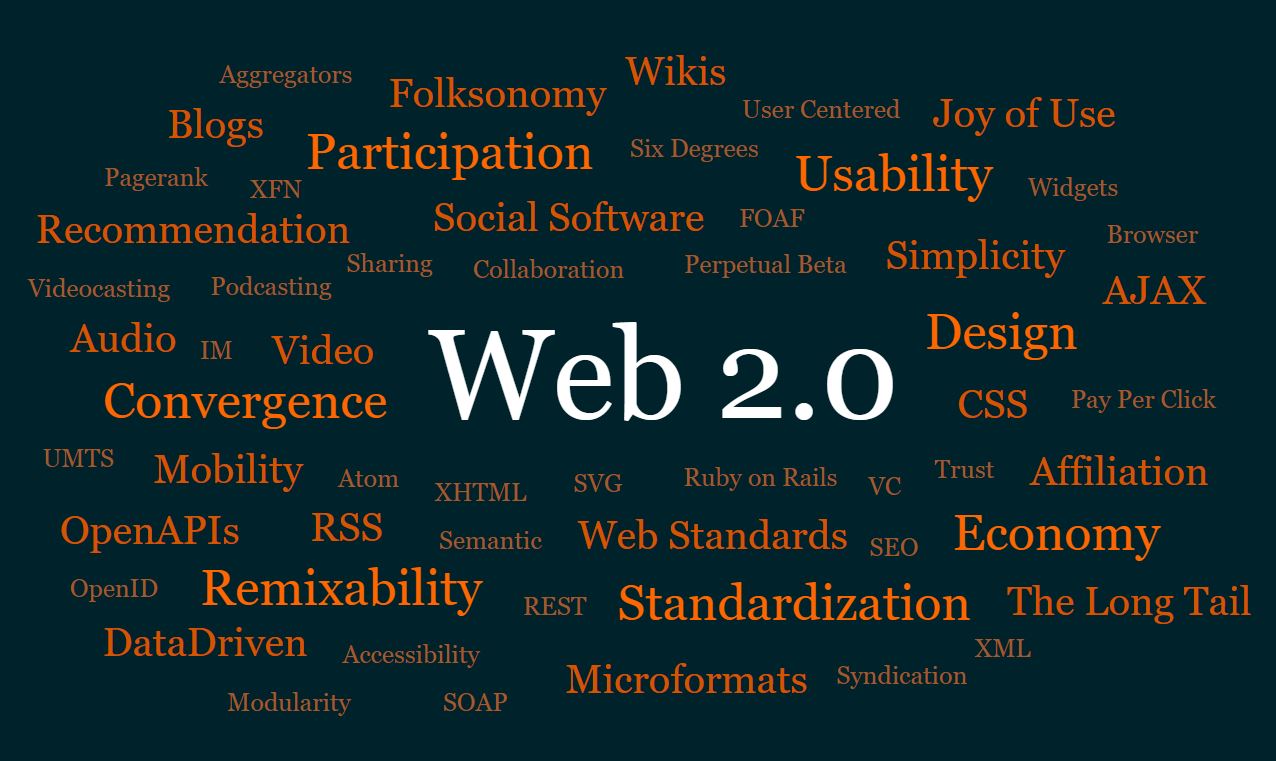
With the changing trend in the use of World Wide Web, as an improvised version, Web 2.0 has come up with an aim for enhancing creativity, increase collaboration, improved web 1.0 in terms of functionalities, and secure information sharing.
What is Web 2.0?
Web 2.0, a second advanced generation of WWW, is about revolutionizing the way of creating, editing, and sharing user generated content online.
Web 2.0 is one of the series of improved technology rather than a specific version of web. It is characterized specifically as a transition from Static web pages to highly Dynamic web pages or user generated content.
How Web 2.0 came into Existence?
The name came into existence from a software Industry, where each new software program is named using some numeric value. Web 2.0 was coined out in the year 2004 by Darcy DiNucci; an information architecture consultant, in her article named – “Fragmented Future”, and was popularized by Tim O’Reilly and Media Live International.
Features of Web 2.0
Technologies used in Web 2.0
In order to improve communication and strengthen bonds with customers, Web 2.0 make use of following rich web technologies:
Tools for Web 2.0
Blog:
Blogging makes it possible for you to publish your thoughts and spread them out to the entire world. Nowadays, there are no of blogs available on internet for free blogging. Blogs are a perfect medium of interactive communication, instead of a library, which earlier web used to be. Blogs are said to be “cumulative” where user can post as well as comment.
Social Networks:
Another powerful tool is Social Networking websites, it enables the desired network to grow exponentially,
by communicating via text, voice, chat, instant messages, video-conferencing and etc’s.
Some of the common Social Media Networks are:
- Myspace
- Instagram and many more…
Wikis:
There are numerous Wikipedia pages that enable everyone who access it, to contribute and modify content easily. We can call it “iterative” in nature, as one could undo or redo each other’s work.
Social Book Marking:
Social Book marking is an advance way to store, organize, and share collection of website across the internet. It is used to save the links to website that the user wants to retain or share.
Comparing Web 1.0, Web 2.0 and Web 3.0:
Web 1.0:
Web 1.0 was the stage of World Wide Web with only flat data(“read only”). It simply acts as an information portal where user could only passively receive the information without being able to reply or comment or edit on it.
Web 2.0:
This stage of World Wide Web allow the users to actively “read as well as write”, it thus improves collaboration and information sharing on a wide scale over internet. Ajax, JavaScript Framework, Micosoft.NET Framework and Adobe Flex are the respective technologies used for Web 2.0.
Web 3.0:
Unlike to Web 1.0 and Web 2.0, Web 3.0 would be the “read-write-executable” stage of World Wide Web. It is going to be the Third Generation of Web, which will make the web more connected, open and intelligent. Technologies in association with Web 3.0 are Semantic Search, Knowledge base and with Intelligent digital assistance.



